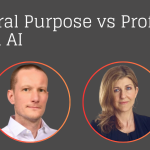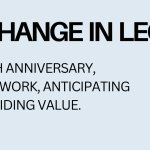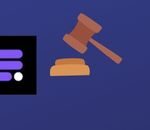Since the Financial Times Innovative Lawyers 2022 awards became public a few days ago there has been a flurry of excitement and many column inches written about Shearman & Sterling’s new legal operations offering. Much of the emphasis has been on the fact that Shearman is a baller white shoe Wall Street giant now offering its clients alternative legal services. But what exactly is Legal Operations by Shearman? Presumably not a commodity venture? How does it differ from the services provided within the firm, which has been involved in an extensive transformation programme since 2018? And what, or who does it compete with?
After a quick ponder on what the term ‘legal operations’ really means any more, I asked Anthony Widdop, global director of legal operations, for the low down on Shearman’s new offering, which we were told in a press release will focus on knowledge management (improved capture of knowledge); process improvement; legal technology (identifying the most relevant technologies); business intelligence; and training and development (to support continuing legal operations.)
Widdop leads the new venture, which was shortlisted for and commended in the FT’s ‘designing the client experience’ category, alongside chief knowledge and client value officer Meredith Williams-Range, and chief technology officer Lawrence Baxter. For my thoughts on this heavyweight team and the offering itself, read to the end.
Is Legal Operations by Shearman a technology or services-based offering?
It is more services than tech. We’re not a technology provider and we will remain agnostic. The service that we will provide will be around the process, people and technology but we will be open to the right technology, not wedded to any particular vendor.
How does this differ from the services that you already provide?
I’ve been here five years and historically, we haven’t packaged up our capability in this space as a complete offering, which is what we have been doing this year. It’s now under one umbrella, which make it easier for partners to pick and choose depending on what their client needs. Brand is so important. We have had people providing these services but historically they didn’t have a name and were more ad hoc in nature. We are being proactive and making the service repeatable in an advisory capacity.
This is not a low cost or commodity venture. It’s a high value venture where we can make an impact by helping a client set up a legal operations function or solve a process issue. It’s not a case of ‘can you help with this niche bit of technology’ – it’s big picture. We are utilising the most experienced people across Shearman.
We have looked at how to tap into the most seasoned legal operations people like Meredith, Glenn, Lawrence and people who have worked in consulting. They are all here in one place and that is hard to replicate in terms of their expertise – and the market is crying out for it.
Who else will be involved in Legal Operations by Shearman?
The people actively involved will differ based on opportunity, project, client and region. The two regions in the first wave are the United States and the United Kingdom, where the biggest markets for legal services are. From those we are going to be drawing on a community of 20-25 people. That’s not to say they will be full time, but depending on the needs we have and the offering we have set out, they will have they will have a part to play in driving those offerings.
You said this isn’t a technology play but tell us more about the tech side of the offering?
There are a couple of different plays. One is that we have been talking to a couple of clients about how they get more out of the technology they have. For example, we are working with a team in New York and like most clients they are a Microsoft shop, so we are talking to them about how to get more out of Teams and the software that they are already paying for. Another example is that we are working with an insurer on contract lifecycle management. They have a couple of solutions and it’s about how they get more out of those solutions and increase adoption.
That’s interesting because isn’t that more of a technology consultant role?
My background is in change management and at KPMG I headed up change and the challenge that I have seen in every organisation is that most technology challenges are not about the tech but about the adoption. All those challenges are ones we can anticipate. We aren’t going to be the ones configuring the software, but we might say ‘we’ve adopted or integrated with a similar solution and here are the lessons we’ve learned.”
KPMG recently became the latest to unveil its legal ops offering, are you competing with the Big Four?
We don’t seek to compete with the Big Four in that space and depending on the client, that could be broad and high volume work and this isn’t a high volume play. We are open to working with the ALSPs and the Big Four – we have relationships with them and have worked with them in the past. But there is a sweet spot in this emerging ecosystem for legal operations, where what’s needed is not a big law firm, not in house, not an ALSP, and we believe there’s a market demand for this type of service.
So does it create a bigger pie or take a piece of the pie from elsewhere?
We’re not taking anything away, it’s additive and comes from our conversations with clients and client demand. This market is still emerging, and we firmly believe that there is a latent demand.
Last but not least, what is Acceler8?
I took inspiration for Acceler8 from my consulting career. It’s a hot housing technique to sign off, approve and design change roadmaps from week and months to days. From my experience of being part of big transformation projects, they take too long. You don’t have the right decision makers and right individuals to give approval in one session. On the webpage for Acceler8 it has a detailed methodology and shows you what happens before, during and after the sessions. It can be one day or three, where we tackle multi-year legal operations strategy. Post the event, the client will get a copy of all of the decisions captured and a road map with timings, all captured during the meeting by a livescribe so that decisions are captured in real time as they are made.”
Comment: On one level, it seems strange that a corporate would be advised on its technology arrangements and adoption by a law firm. In an ideal world, this is something that would be handled internally, but from speaking to many law firm innovation and legal operations heads, it’s not. This ‘gap’ has already given rise to legal operations teams across firms such as Norton Rose Fulbright, Herbert Smith Freehills, and Baker McKenzie, where the objective is not to deliver legal services, but to help legal departments work more efficiently. Inevitably, Legal Operations by Shearman has drawn parallels with Cleary Gottlieb’s tech platform ClearyX. These types of alternative offerings can become quite sticky, and lead to other wins.
Shearman is not the first law firm to launch a legal operations offering, but the team behind Legal Operations by Shearman is world class, and this is definitely one to watch.











